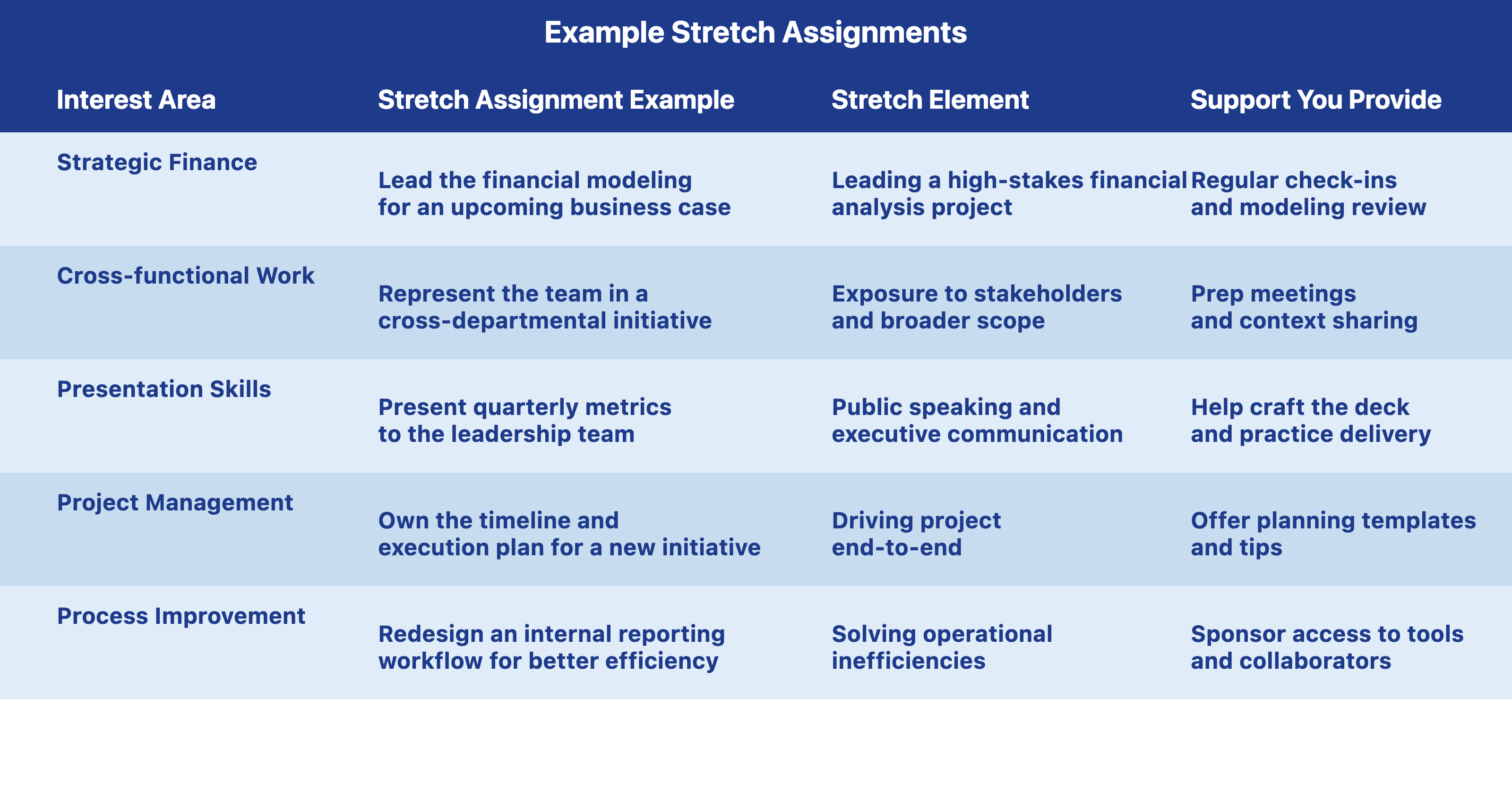Supporting your team’s growth means more than just assigning tasks—it’s about connecting their daily work to their long-term ambitions. In this unit, you’ll learn how to create meaningful development opportunities by matching assignments to individual aspirations, broadening exposure across functions, and leveraging mentorship. These strategies not only boost engagement but also help your team members see a clear path forward in their careers.
A stretch assignment is a project or responsibility that pushes someone just beyond their current comfort zone, helping them build new skills and confidence. The key is to align these assignments with what excites your team member. For example, if someone is interested in strategic finance, you might say, "I'd like you to lead the financial modeling for our next business case—I'll support you along the way." This approach demonstrates trust and shows that you’re invested in their development. Remember, the right stretch assignment should feel challenging but achievable, and your support is crucial for success. The table below shows some common examples of stretch assignments and how you can best support your teammate:

Encouraging your team to collaborate with other departments or take on cross-functional projects can accelerate their learning and open new doors. You might suggest, "Would you be interested in working with the sales team on their next forecast? It’s a great way to see how our work connects across the company." This not only builds new skills but also helps team members understand the broader business context.
Mentorship is another powerful lever for growth. Connecting a team member with a mentor—whether it’s a peer, a leader in another area, or even yourself—can provide valuable guidance and perspective. A simple introduction could sound like, "I’d like to connect you with Priya, who recently moved into a strategic finance role. She can share her experience and offer advice as you explore similar opportunities." This kind of support helps your team feel seen and supported as they pursue their goals.
Here’s a realistic example of how a manager can align work with a team member’s career goals:
- Jessica: Thanks for meeting with me, Ryan. I wanted to talk about your interest in strategic finance and see how we can help you grow in that area.
- Ryan: I appreciate that, Jessica. I’ve been hoping to get more hands-on experience, but I’m not sure where to start.
- Jessica: I have a stretch assignment in mind—leading the financial modeling for our upcoming business case. It’s a step up, but I’ll be here to support you. How does that sound?
- Ryan: That sounds exciting, but I’m a bit nervous about taking the lead.
- Jessica: That’s completely normal. I can also connect you with Nova, who recently made a similar transition. She’d be a great mentor as you take this on.
- Ryan: That would be really helpful. Thank you for thinking of ways to support me.
In this exchange, Jessica demonstrates how to match assignments to aspirations, offer support, and introduce mentorship—all key ideas from this unit. Notice how she listens to Ryan’s concerns, provides encouragement, and connects him with additional resources.
By thoughtfully aligning work with each person’s career aspirations, you empower your team to grow, stay motivated, and contribute at a higher level. In the upcoming role-play session, you’ll get to practice recommending development opportunities that match your team members’ ambitions.
